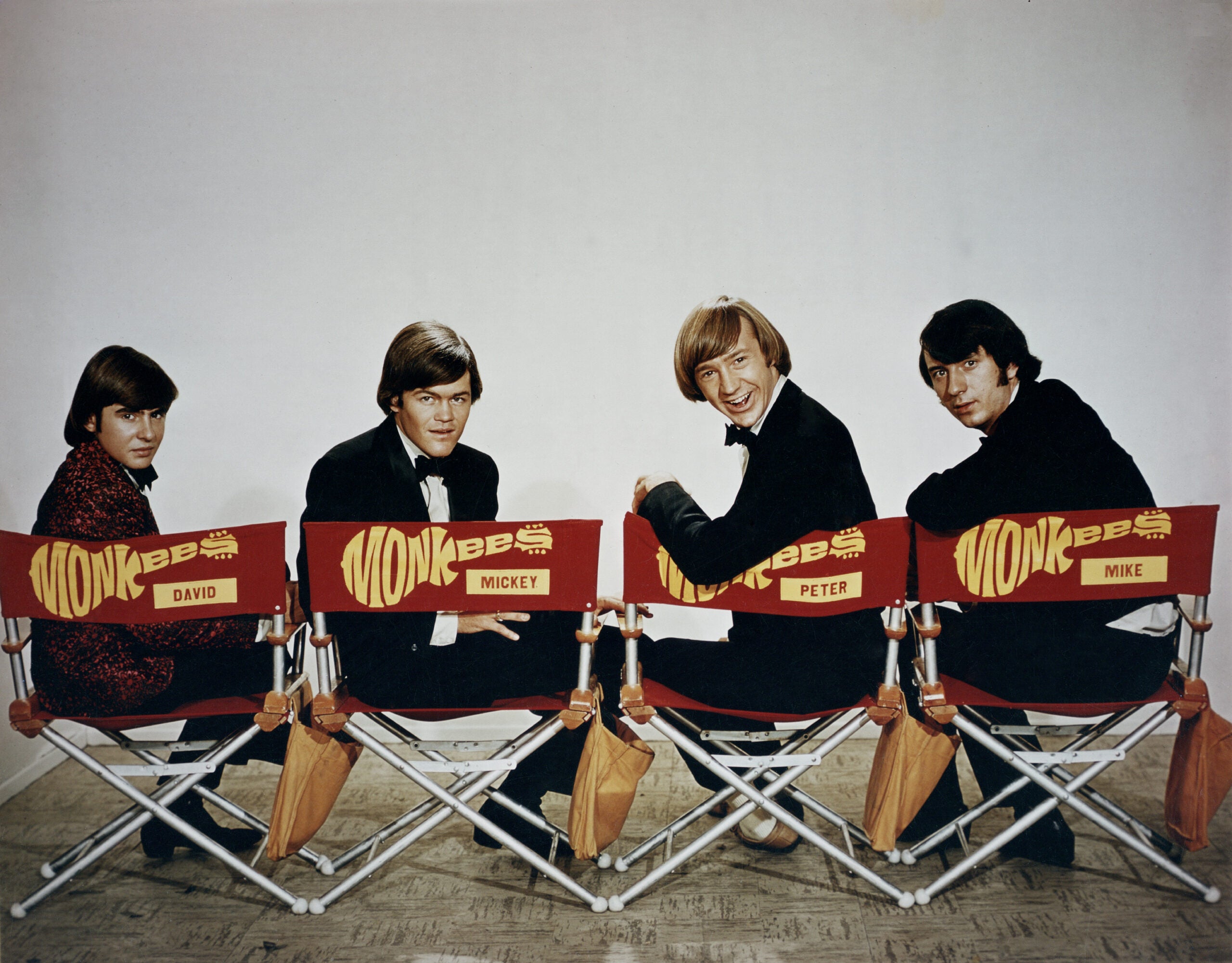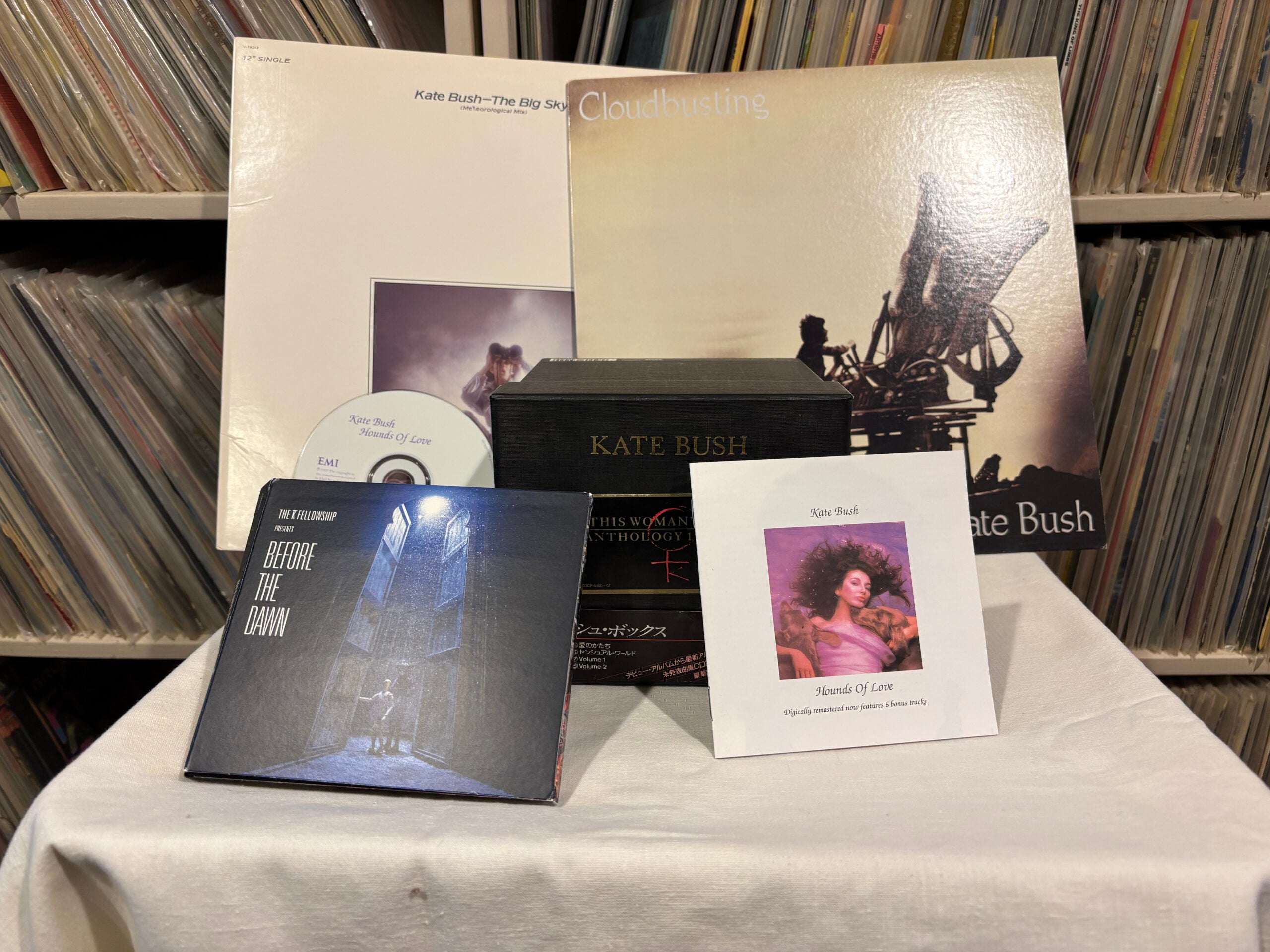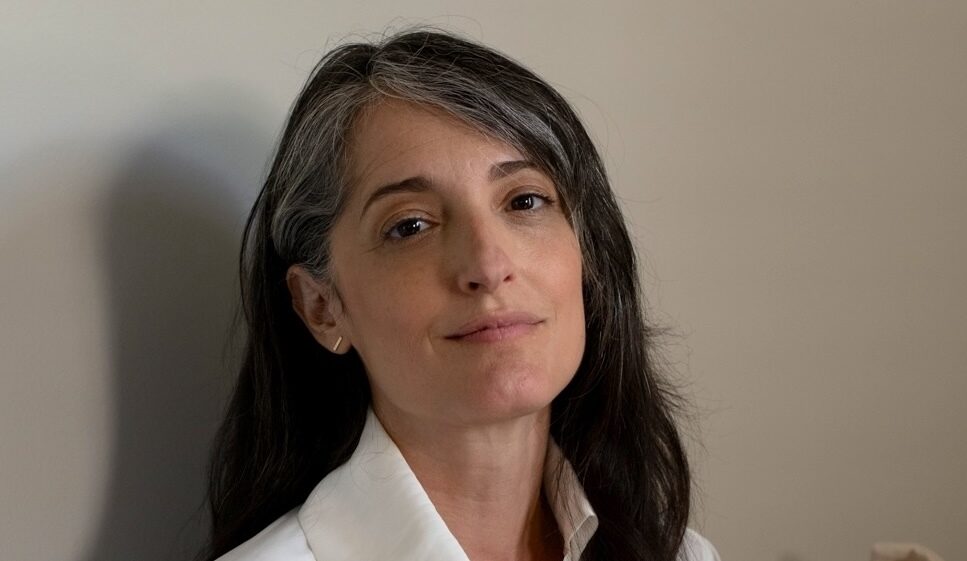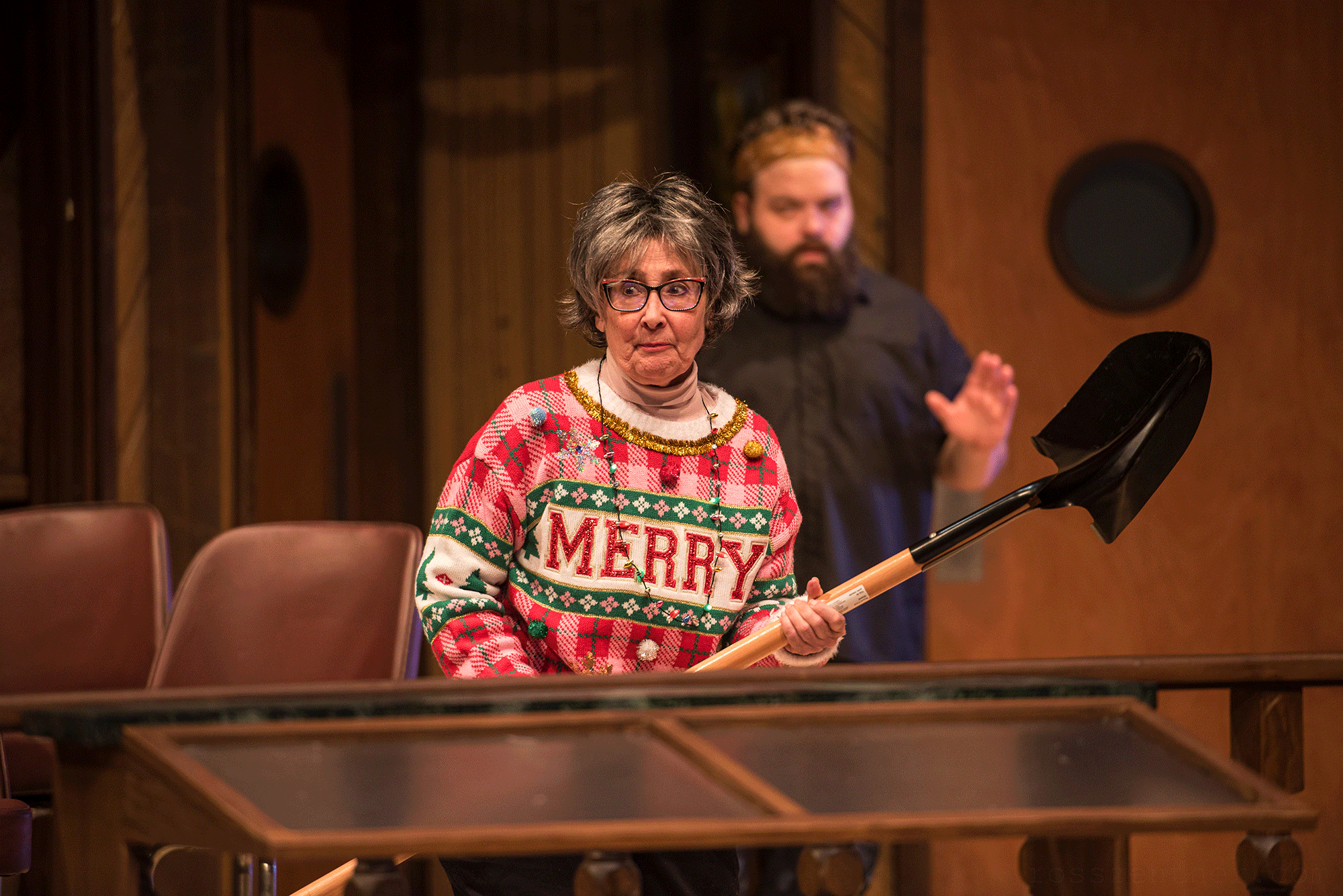Comedian Laurie Kilmartin joins us to talk about her latest album, “Corset.” Also, best-selling author Jami Attenberg pivots from fiction to non-fiction with her intimate memoir. And author Peter Mills on the Monkees’ box-office flop, “Head,” which could be their greatest achievement.
Featured in this Show
-
Comedian Laurie Kilmartin releases some pressure on 'Corset'
According to comedian Laurie Kilmartin, there are a lot of similarities between a corset and straitjacket. Both are garments that can be worn with a purpose to constrict. She tells WPR’s “BETA” that it’s in this playful vein that she titled her latest stand-up special, “Corset.”
“I recorded it in 2019 and at that time, my mother was living with me, and I’m also a single mom and my son was 12,” says Kilmartin. “I felt like between the two of them, I was being suffocated, much like if I was wearing a corset that had been tied too tight. Believe me, when being bookended by those two, my young son and my old mother definitely felt like I was in a straitjacket.”
After landing on that metaphor and title for the album, Kilmartin decided to actually purchase a corset for the cover photo shoot. It was only then that she learned that much like a straitjacket, you need a few pairs of hands to get it on. She enlisted the help of her friend and fellow comedian Cristela Alonzo — who was, strangely, uniquely qualified to do so.
“I just posted a picture of the one I bought on Amazon on Twitter and I didn’t realize it would be difficult to get into. And then Cristela DM’d me and was like, ‘I used to do that for a living,’ and I’m like, ‘Wait, that’s a job? Putting a corset on people?’” Kilmartin said. “She got me into it and she had to get me out of it. If she hadn’t chimed in and just offered, I don’t know what we would have done.”

Photo courtesy of Laurie Kilmartin“Corset” finds the veteran Kilmartin at the top of her game. The twin pulls of her adolescent son and aging mother provide more than enough material, but she doesn’t settle on those specifics. They’re setups for more universal and playfully provocative riffs on single parenting, caretaking, health care, dating in a digital world, menopause and even tips on pet ownership.
“I’m in California and so we have a fire season like 11 months of the year, and every year there’s a story about somebody who dies because they go back into their fiery house trying to rescue their dog. And so, I just started doing a bit where I talk to the audience. I talk to someone who swears they would do that, and I try to talk them out of it,” Kilmartin quipped. “One of the tenants is that your dog is replaceable, which everyone chafes at, but my proof is that my dad had five black labs over the course of his lifetime named Pepsi. And every time one of the Pepsis would die, he would go to the pound, he would pick out the next Pepsi, he would take the collar off the dead Pepsi, put it on the new Pepsi and carry on. And our family had, like, one red dog collar for 55 years.”
The set is tightly written and builds upon itself with stellar callback, but it retains a free-flowing vibe because Kilmartin effortlessly weaves in her audience during all of this crowd work.
“I always invite those opportunities. To me, it makes the show really unique, and if I can call back any sort of crowd work in a joke, it just makes it a unique experience. I always like to wrestle with the crowd a little bit,” she said.
While her son is the setup for a lot of these bits, Kilmartin says that, in reality, her son isn’t hyper aware of a lot of the material she’s doing.
“(Before COVID-19), he would come with me to clubs, but it was clubs that had cheeseburgers. Like that was his No. 1 priority for a comedy club is that it have a cheeseburger,” Kilmartin joked. “Since I’m chronicling his life in real time, there’s some stuff he can hear later when he’s an adult that he doesn’t need to hear at the same time he’s living it. Especially when I’m talking about his grades and stuff. I try to be more positive at home. I’m definitely more negative on stage, and so I wouldn’t want him to think I actually feel that way.”
Kilmartin first came to prominence for a large audience a few years ago when she live tweeted her father’s final days and turned that into the hilarious and heartfelt book, “Dead People Suck.” In “Corset,” Kilmartin continues her own coping method of humor as healing in the bits about her aging mother. Her mother sadly passed from COVID-19 in between the album’s recording and release.
“I was relieved that I recorded the album while she was still alive because obviously, I can’t do that material when she’s dead. I wouldn’t have been able to fake that she was alive,” Kilmartin said. “I have a whole new chunk of material about her dying of COVID, which, you know, causes some consternation sometimes in front of some crowds. But I don’t care.”
So I am just watching my mom sleep and cough in her hospital bed, over Facetime, trying to gulp down these last moments having a mom. This is all happening so fast.
— Laurie Kilmartin- NYC Jan 16 The Bell House (@anylaurie16) June 13, 2020Similar to her father’s passing, Kilmartin was able to utilize a new technology to say goodbye. While she did tweet a bit during her mother’s final days, she and her sister were able to maintain a livestream via their iPad to their mother’s hospital room.
“I don’t know how much she could hear us, but we just pretended like she could. And we talked to her and we’d take the iPad around the house and just say what we were doing and all that kind of stuff. And so that was the last call. It was three days long,” she said.
Near the end of “Corset,” Kilmartin has a sidesplitting bit about flying to Ireland with her son to spread her dad’s ashes at his ancestral home, only to trespass into a herd of randy cattle. When asked if she’d plan to honor her mother in a similar way, she hinted that the dairy state might be a better destination.
“She comes from Luxembourgers who settled in Wisconsin, so we have a lot of ties to Wisconsin,” Kilmartin said.
Just be careful, Laurie. There are plenty of cows here, too.
-
Author Jami Attenberg reveals the life of her mind in debut memoir
Jami Attenberg is the New York Times best-selling author of six novels and one short-story collection. She’s probably best known for her novel, “The Middlesteins.” Attenberg has shifted gears with her latest book. It’s a memoir called “I Came All This Way to Meet You: Writing Myself Home.”
The book delivers an intimate and enlightening look at both her personal life and her writing life. Through free-flowing prose, Attenberg takes us inside the life of her mind and courageously shares the ups and downs of her life.
There is one constant throughout — her core identity as a writer and an artist. Attenberg also writes candidly about how she adopted some of her father’s salesman techniques to advocate for herself and her work.
“Honestly, I never wanted to write a memoir,” she told WPR’s “BETA.”
“If you had asked me three years ago, I would have said never, ever, ever, would I do it. All of a sudden, I had all these stories that I wanted to tell,” Attenberg continued. “I was about to turn 50. I wanted to collect all my thoughts into one place — reflections, especially on being a writer and an artist and a creative person — and see what I’ve learned and kind of recognize the mistakes that I made and the lessons that I could glean from them. And it just made perfect sense at the time that I should suddenly start to write this thing. As it is with most creative projects that I start, it just it didn’t seem like it made sense until it did.”
The title of Attenberg’s memoir perfectly captures the intimate tone of her book. You feel like she’s a good friend that you’ve known for years and that she’s writing just to you. So why did she choose these words for the title?
“Well, ‘I came all this way to meet you’ is actually a sentence from the book, that shows up late in the book where I’m walking through an ossuary in Naples.”
The passage is: “As I walked through, I thought: I came all this way to meet you. Hello, hello. The ossuary felt earthy, organic, and alive.”
Attenberg explained that there are a few moments in the book where she explores otherworldly places — cemeteries, ossuaries, catacombs, thinks like that. She also contemplates and writes about ghosts.
“It only happened a few years ago,” she said. “I was more peaceful. I was more calm at that moment, and I just was saying ‘hi’ to the ghosts as I was walking through the ossuary. That was that moment that popped out at me…The book is about finding myself too and also finding all the people in my life that I love. And so it does a lot of work, that title.”
Attenberg has said that she’s finding it so much more difficult to talk about memoir than her fiction because there are no characters to hide behind. But she said it was tricky to write without those characters between her and the pages.
“It’s really tricky,” she said. “Fiction is a great place for a person to hide, and the characters, you spend a lot of time getting to know them and you love them and hate them sometimes, too. It’s like gossiping about someone, which is one of my favorite things to do. I love to gossip. I think of fiction writing as just basically gossiping about characters. So I can do that all day, really. But gossiping about myself is a different story.”
There’s a lot of humor in Attenberg’s memoir, but there are also very serious moments about the sacrifices she’s made in pursuit of a creative life.
Attenberg’s memoir includes a powerful passage about grief: “Grief can be forever. We are taught to seek closure in this country, we are encouraged to move on quickly. We are judged, possibly, for not getting over things fast enough, but grief can be for your whole life.”
“What I’m writing about is the grief of my mother, who’s lost her parents when she was young and how that had impacted me and how I watched her travel with her and her life,” Attenberg told “BETA.”
Attenberg said that writing moments between mothers and daughters will always be her most beloved territory.
“I get a kick out of listening to mothers and daughters, talk to each other. I definitely have a fun mom to talk to. She’s very raw and she’s very smart,” she said.
“But I think that mothers and daughters, from my perspective anyway, have a particular kind of closeness. And yet they challenge each other and they’re like each other and yet can be different, too. And I don’t know, it’s different than talking to a dad and it’s different than talking to a sibling. It’s your mom, (and she) kind of just knows you and in a specific kind of way.”
She said that she’s been very fortunate that she hasn’t really lost people who are close to her, but there are still things that she mourns.
“I write through everything, whether it’s in fiction or nonfiction, and I hope that I carry it well. I hope that I don’t allow the sadness of my life to get in the way of me being the best version of myself.”
Attenberg believes a person must “arrive at an intersection of hunger and fear to make great art,” as she wrote in her memoir.
“Whenever I’m not writing, I wish that I were writing. But also, you can’t always be writing. Your brain needs rest. And then at some point, there’s kind of this trigger moment where my brain is like, ‘Enough rest, I must write,’ you know, ‘I have to succeed, I have to be making something happen.’”
“And that’s kind of that hunger. And then the fear is just sort of like sitting still; your life stays exactly the same. I don’t want my life to ever be too dull or too slow. I always want to be kind of in motion.”
So what has Attenberg learned about herself from writing “I Came All This Way to Meet You”?
“Oh my gosh. Okay, you’re only the second person to ask me that. And the first time I was like, ‘I don’t know.’ But I do know.”
“I did realize that I like myself a little bit more than I thought I did. That was kind of a big revelation. I looked at the end and I thought, ‘All right, I’ve made all these mistakes. I’m not a terrible person. I’m an at least an okay person.’ And that was important for me to realize that I had done some okay things with my life too, and that I’d accomplished things.”
“And that wasn’t why I set out to write the book at all. I wrote the book because I had these stories inside of me that I was dying to tell. That’s why I write any book, is because it’s in me and it has to get out. It’s not a cathartic moment, it’s just I feel a little bit more comfortable with myself after writing this book.“
-
'It becomes truer the older it gets': The Monkees' Michael Nesmith on 'Head's' heady ideas
In 1968, the Monkees made their one and only feature film, “Head.” Directed by Robert Rafelson — who worked with the Prefab Four on their self-titled TV series — “Head” is one of the weirdest movies ever made
It features some of the Monkees’ best songs and includes the film debut of the one and only Teri Garr. And great news for Packers Nation, there’s also a cameo by legendary Green Bay linebacker Ray Nitschke. Go Pack Go!
Band member Michael Nesmith spoke with WPR’s “BETA” about the film and its long-lasting impact.
“I loved making it,” Nesmith said, “I had such a good time with Bob (Rafelson) and Jack (Nicholson), and it was the high point of my whole Monkees experience. And I think it lives on well beyond the television shows. The television shows have their place, but it lives on like the music lives on. It stands on its own three feet or 12 feet or whatever they are.”
“It has a life that comes from literature. It has a life that comes from fiction. It has a life that comes from fantasy and the deep troves of making up stories and narrative … but the narrative that it was telling was very, very different than the one the television show was,” he continued.
One of the highlights is the band — made up of Nesmith, Micky Dolenz, Davy Jones and Peter Tork — performing a live version of Nesmith’s composition “Circle Sky.” There’s so much energy and rawness in that performance, it sounds like a prototype of punk rock.
What does Nesmith remember about filming that performance?
“Well, Bob (Rafelson) and to a degree, Jack (Nicholson) were really curious about how to stage it and how to make it have a beat inside the movie that was consistent with the other beats that they were creating,” Nesmith said.
“So you had had something on the screen. You couldn’t just wave the camera around like Ken Kesey had done on the bus further and expect something to come out of it,” he explained. “So they wrote up this idea that the crowd came forward at the end of the performance and began to rip our clothes off, only to find out that beneath the clothes were dummies.”
“For me, it was one of the most powerful moments in the movie because it’s like, that’s it. That’s the real thing,” Nesmith added. “What you’re seeing there is what we did as a band that never intended to be a band.“
Peter Mills is a senior lecturer in Media and Popular Culture at Leeds Beckett University in Leeds, England. He’s also the author of “The Monkees, Head, and the 60s.” Does Mills agree that Rafelson set out to deconstruct and destroy the Monkees’ TV image by making the movie?
“Oh, absolutely,” Mills said. “The film begins and ends with a jump from a bridge. And one of the big themes of the film is escape and persecution. Throughout the film, the Monkees are kind of attacked and pursued and reviled by all sorts of people. That theme of wanting to escape themselves is very strong in the movie. Even right at the end you think, ‘Oh, finally, they’ve done it. But the film plays one last cruel joke on them.”
Nicholson co-wrote the screenplay for “Head” with Rafelson, and the story goes that Nicholson structured the script along the lines of an acid trip. Mills said while that logic stands, he thinks of the film a little differently.
“To me, it’s more like something like ‘Alice in Wonderland,’ which I know also has a sort of lysergic aspect to it, where one scene blossoms out of another rather than a formal, structured narrative,” Mills said.
Mills explained that the roots of the film actually came out of a lost weekend in November 1967. The four Monkees got together with Rafelson, his producer partner Bert Schneider, Nicholson, and the band’s manager Brendan Cahill at a resort hotel in Ojai, California.
They were “just kind of free associating under the influence of various substances, I believe,” Mills said. “And Nicholson wrote it down. And that was his kind of core document, if you like, that him and Bob Rafelson spun the screenplay out of.”
One of the most beautiful marriages of visuals and music in the film is the opening scene in which Dolenz jumps off the Gerald Desmond Bridge and you hear the opening chords of Carole King and Gerry Goffin’s “The Porpoise Song (Theme from Head).”
Mills said it’s one of his favorite moments in cinema.
“The Monkees are being chased across this bridge, and it’s just Micky actually, who jumps off the bridge,” he said. “And you see this figure falling and just for a few precious seconds, there’s just silence. Actually, there’s just kind of the wind song and then the first chords of ‘The Porpoise Song’ strike up. And you see the figure falling. And just as the figure who we believe to be Micky hits the water, the song breaks.”
“It’s absolutely exquisite, but it’s also awful, too, because, you know, you’ve just seen somebody jump off the bridge and hit the water,” he added.
About 41 minutes into “Head,” we find Inspector Shrink (played by veteran actor Charles Macaulay) taking the Monkees on a tour of a factory.
Mills teaches a course at Leeds Beckett University called “Popular Music and the Moving Image.” He spends one week of that course talking about the Monkees and “Head.”
“When I’m talking about this stuff in the classroom, we talk about some kind of fairly hard core cultural theory, people like Theodor Adorno and Walter Benjamin, but it’s the idea of culture as an industrial product,” he explained.
“If you’ve seen the film, you’ll remember the image of the box; the Monkees themselves get trapped in a box. It becomes a big sort of theme toward the second half of the film. But in that factory scene, the factory is producing boxes, each of which has a logo of the black box on it. So, you know, it’s really visually sort of reinforced,” he said. “And that’s one of the examples where this film really repays repeat viewing because you start to see the connections between these apparently totally random scenes that don’t seem to have anything to do with each other.”
Mills said he thinks interest in “Head” has grown since its original release more than 50 years ago.
“I think it’s going to continue to grow because there’s so much in there. And incredibly, it becomes truer the older it gets. I don’t know how that happens, but some of the themes become more and more relevant rather than historical.”
Episode Credits
- Doug Gordon Host
- Adam Friedrich Producer
- Steve Gotcher Producer
- Steve Gotcher Technical Director
- Laurie Kilmartin Guest
- Jami Attenberg Guest
- Peter Mills Guest
Wisconsin Public Radio, © Copyright 2025, Board of Regents of the University of Wisconsin System and Wisconsin Educational Communications Board.




